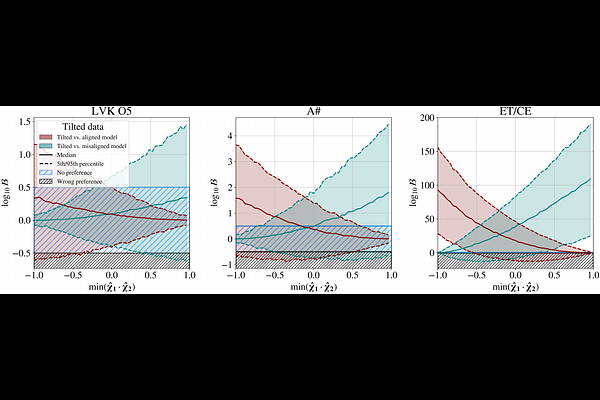Distinguishing the origin of eccentric black-hole mergers with gravitational-wave spin measurements

Distinguishing the origin of eccentric black-hole mergers with gravitational-wave spin measurements
Jakob Stegmann, Davide Gerosa, Isobel Romero-Shaw, Giulia Fumagalli, Hiromichi Tagawa, Lorenz Zwick
AbstractIt remains an open question whether the binary black hole mergers observed with gravitational-wave detectors originate from the evolution of isolated massive binary stars or were dynamically driven by perturbations from the environment. Recent evidence for non-zero orbital eccentricity in a handful of events is seen as support for a non-negligible fraction of the population experiencing external driving of the merger. However, it is unclear from which formation channel eccentric binary black-hole mergers would originate: dense star clusters, hierarchical field triples, active galactic nuclei, or wide binaries in the Galaxy could all be culprits. Here, we investigate whether the spin properties of eccentric mergers could be used to break this degeneracy. Using the fact that different formation channels are predicted to either produce eccentric mergers with mutually aligned or randomly oriented black-hole spins, we investigate how many confident detections would be needed in order for the two models to be statistically distinguishable. If a few percent of binary black hole mergers retain measurable eccentricity in the bandwidth of ground-based detectors, we report a $\sim40\,\%$ chance that we could confidently distinguish both models after the fifth observing run of the LIGO-Virgo-KAGRA detector network, $\sim80\,\%$ for LIGO A#, and $\sim98\,\%$ for the Einstein Telescope and Cosmic Explorer.